Are you looking for a way to grease a pan without using oil or butter? If so, you’re in luck! There are several ways to do this, and each method has its benefits. It is important to know how to grease a pan without oil or butter.
In this blog post, we’ll discuss four different ways to grease a pan without using oil or butter. We’ll also take a look at the pros and cons of each method. So, whether you’re looking for a healthier way to grease your pans or you’re just trying to cut back on calories, read on for tips on greasing your pan without oil or butter!
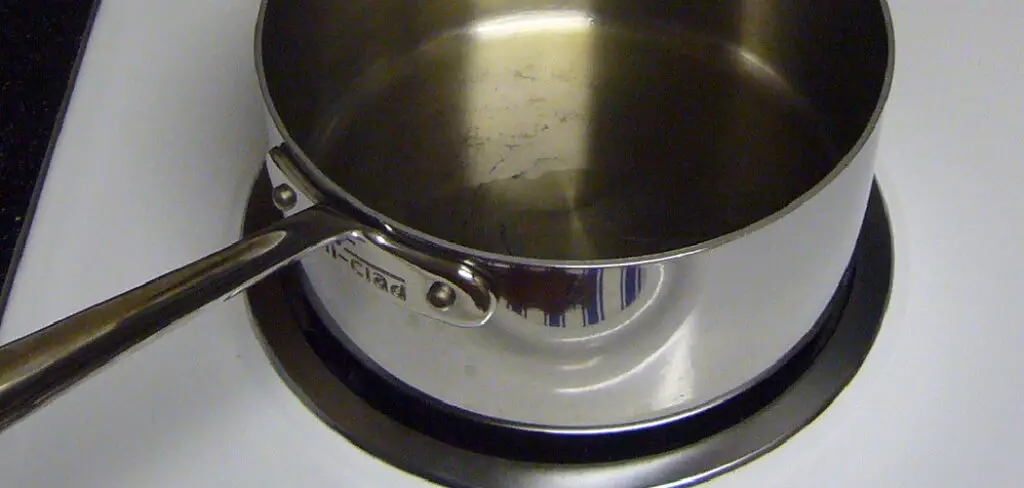
Materials You Will Need
- 1 tablespoon of flour
- 1 tablespoon of water
- A clean, dry cloth
7 Steps Guide on How to Grease a Pan Without Oil or Butter
Step 1: Combine Flour and Water in a Small Bowl
The simplest way is to combine flour and water in a small bowl until you have a paste. Then, use a pastry brush or your fingers to spread the paste evenly over the surface of the pan.
Be sure to coat the entire surface, including the sides and any corners. Once you’ve coated the pan, you can proceed with your recipe as usual. The flour will help to create a non-stick barrier, and it will also add a bit of texture to whatever you’re cooking.
So, next time you need to grease a pan without oil or butter, reach for some flour and water instead.
Step 2: Stir Until the Mixture Forms a Paste
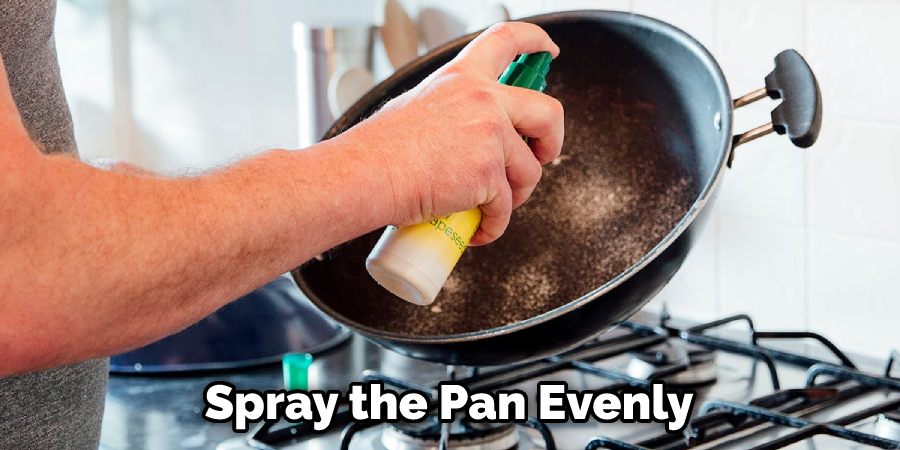
You can use any kind of fat, such as lard, shortening, or even bacon grease, but the easiest way to do it is with cooking spray. Just make sure to spray the pan evenly and get into all the nooks and crannies.
You can also use a paper towel to spread the oil around but be warned that this can leave behind bits of paper. If you’re feeling fancy, you can even use an old t-shirt or piece of cloth.
Just make sure to wring it out well so that it’s not dripping wet. Once you’ve greased the pan, it’s time to add your ingredients and start cooking!
Step 3: Rub the Paste Onto the Surface
Rub the Paste Onto the Surface of the Pan With a Clean, Dry Cloth. For this method, you’ll need something to act as a barrier between the food and the pan. The most common options are oil, butter, or shortening, but there are a few other choices as well.
You can also use petroleum jelly, cooking spray, lard, margarine, or bacon grease. Whichever you choose, make sure it’s at room temperature so that it will spread easily.
Paper towels work well for this purpose too. Once you have your fat of choice, start by rubbing it onto the surface of the pan with a clean, dry cloth. Use circular motions and put a thin layer over the entire surface. If you’re using oil, pour a small amount into the palm of your hand first so that you don’t accidentally put too much on the pan.
Too much oil can cause food to stick or even burn. When you’re finished greasing the pan, place it on a cold burner and heat it on low until the fat melts completely. This will help to further coat the surface and ensure that your food doesn’t stick.
Step 4: Make Sure to Cover the Entire Surface of the Pan
If you don’t have any oil or butter on hand, there are other ways to grease your pan. You can use margarine, shortening, or even spray cooking oil. Just make sure to cover the entire surface of the pan so that your food doesn’t stick.
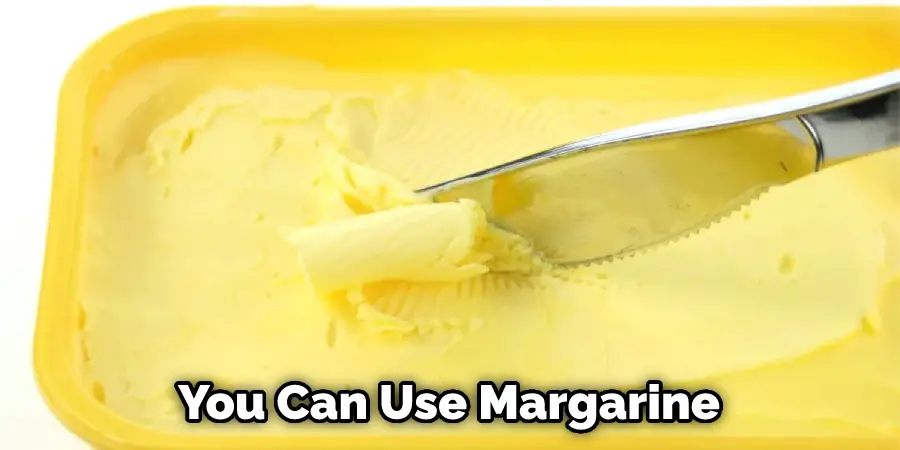
You can also line your pan with parchment paper or aluminum foil for easy cleanup. Whether you’re baking a cake or cooking a meal, greasing your pan will help you get perfect results every time.
Step 5: Allow the Paste to Sit on the Pan for Several Minutes
You can use a variety of substitutes for oil or butter when greasing a pan, including margarine, shortening, cooking spray, or even mayonnaise. However, one of the simplest and most effective options is to simply use a paste made from flour and water.
Simply mix equal parts flour and water to form a thick paste, then spread it over the surface of the pan. Allow the paste to sit for several minutes to give it time to dry and form a barrier, then proceed with your recipe as usual. The flour paste will help to prevent sticking and ensure that your food slides out of the pan effortlessly.
Step 6: Rinse the Paste Off With Warm Water
Most of the time, when you’re instructed to grease a pan, it means rubbing butter or oil all over the surface to prevent sticking and make cleanup easier. But what do you do when you’re out of butter, can’t eat dairy, or are just trying to cut back on fat?
There are several ways to grease a pan without using butter or oil. One method is to use a small amount of cooking spray. Be sure to evenly coat the bottom and sides of the pan to prevent sticking.
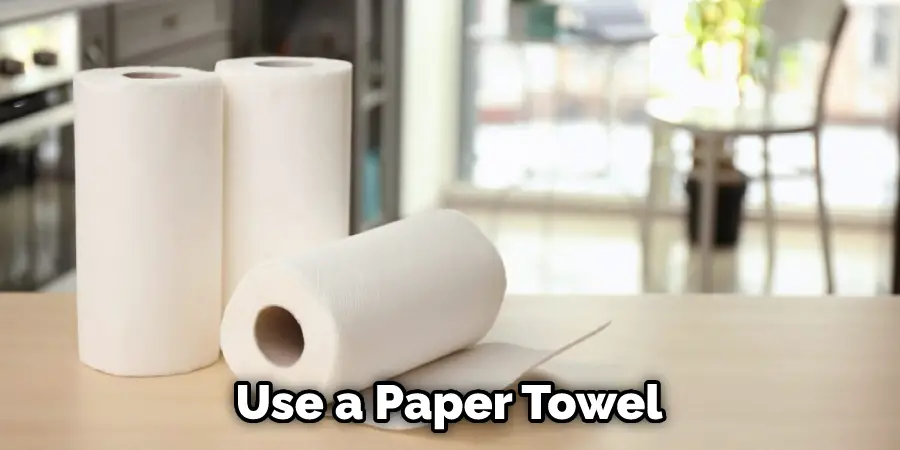
Another option is to use a paper towel or piece of parchment paper to spread a thin layer of shortening, margarine, or lard over the surface of the pan. If using parchment paper, be sure to rub the fat into the creases of the paper so it coats the entire surface of the pan. Finally, you can also use cooking spray or oil-based aerosols like WD-40.
However, be sure not to use too much as this can cause smoking and flames. When using any of these methods, be sure to rinse the paste off with warm water before proceeding with your recipe.
Step 7: Dry the Pan With a Clean Towel
When it comes to cooking, one of the most important things is making sure that your pan is properly greased. This will help to prevent sticking and ensure that your food cooks evenly. However, greasing a pan can be a bit of a challenge if you don’t have any oil or butter on hand.
The good news is that there are a few different ways that you can grease a pan without either of these ingredients. One way is to use a clean towel. Simply Wet the towel with water and then wring it out so that it is damp. Next, rub the towel over the entire surface of the pan.
The moisture from the towel will help to create a barrier between the pan and the food. Another option is to use flour. Simply sprinkle a layer of flour over the entire surface of the pan and then tap out any excess. The flour will help to absorb any moisture and prevent sticking. Finally, you can also use baking soda.
Sprinkle a layer of baking soda over the surface of the pan and then add a layer of flour on top. The two ingredients will work together to create a non-stick surface. Whichever method you choose, make sure to grease your pan well before cooking!
There are several benefits to greasing a pan without oil or butter. For one, it’s a healthier option. If you’re trying to cut back on calories or fat, greasing your pan without oil or butter is a great way to do it. Additionally, it’s a less messy option.
Tips on How to Grease a Pan Without Oil or Butter
- Use a paper towel or napkin.
- Fold the paper towel or napkin into a small square.
- Place the folded paper towel or napkin on the pan.
- Use your hand to smooth the paper towel or napkin over the entire surface of the pan, making sure to apply pressure so that it sticks to the pan.
- Apply a small amount of cooking spray to the paper towel or napkin.
- Place the pan on the stove and turn on the burner to your desired heat setting.
- Cook food, as usual, making sure to flip or stir frequently so that it doesn’t stick to the pan.
- Once finished cooking, remove the pan from the stove and let it cool slightly before washing it with soap and water.
- Dry the pan with a clean towel before storing it away
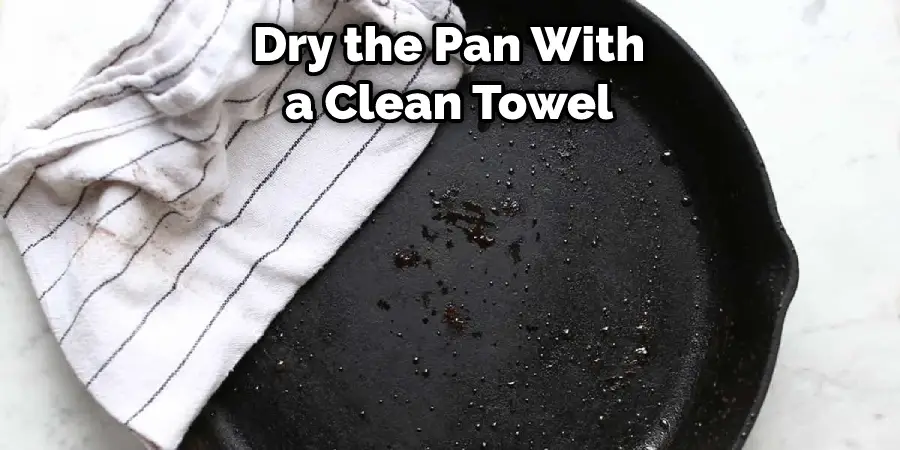
Conclusion
All in all, greasing a pan without oil or butter is a healthy, less messy alternative to using either of those ingredients. You should determine carefully how to grease a pan without oil or butter. Of course, there are also some drawbacks to greasing a pan without oil or butter.
For one, it’s not as effective at preventing sticking. If you’re worried about your food sticking to the pan, you may want to use oil or butter. Additionally, it’s important to note that the flour-water paste can become gummy if it’s left on the pan for too long. If you’re not careful, you may end up with a sticky mess.
Professional Focus
Angela Ervin, a former interior designer turned blogger, specializes in kitchen design and renovations. Through her website, she blends her passion for cooking with design expertise, sharing practical and creative ideas. Known for balancing functionality and beauty, Angela’s insightful content has made her a trusted voice in home design and lifestyle.
About the Author
Angela Ervin, an experienced interior designer and blogger, combines her passion for kitchen renovations with storytelling. Living in Petersburg with her family, she enjoys cooking and testing her projects firsthand. Known for her humor and relatable style, Angela shares creative, functional design insights through her content, making her a trusted voice in home design.
Education History
University: Virginia Commonwealth University
Degree: Bachelor of Fine Arts (BFA) in Interior Design
- Angela’s education at VCU focused on mastering core interior design principles, including spatial planning, color theory, materials selection, and sustainable design practices.
- She gained hands-on experience through studio projects and collaborative design exercises, which honed her ability to create functional and aesthetically pleasing environments.
- Her coursework also emphasized problem-solving and practical applications of design, preparing her for real-world projects like her self-directed kitchen renovations.
- The program’s strong foundation in both technical skills and creative expression shaped Angela’s ability to seamlessly integrate form and function in her work.


